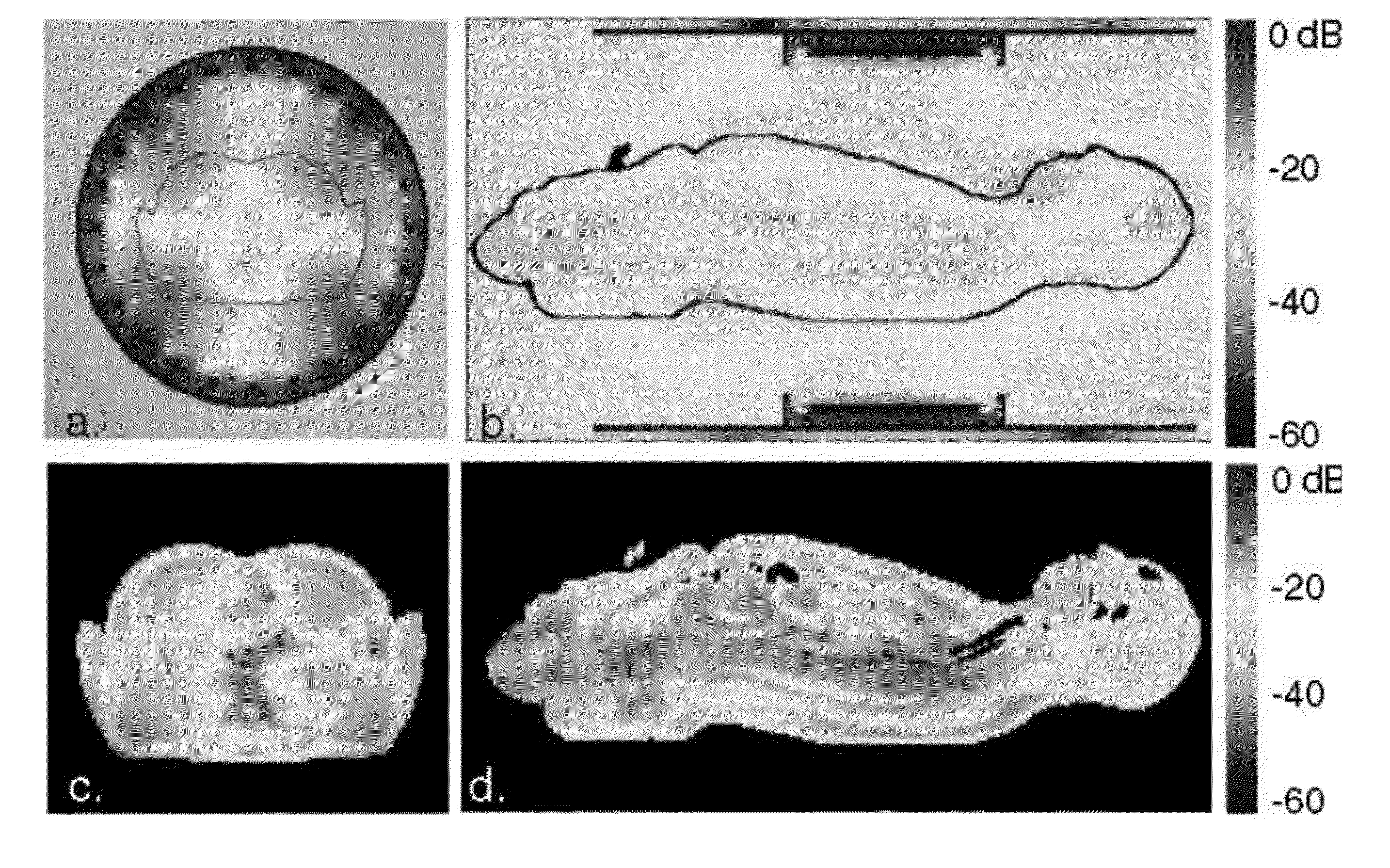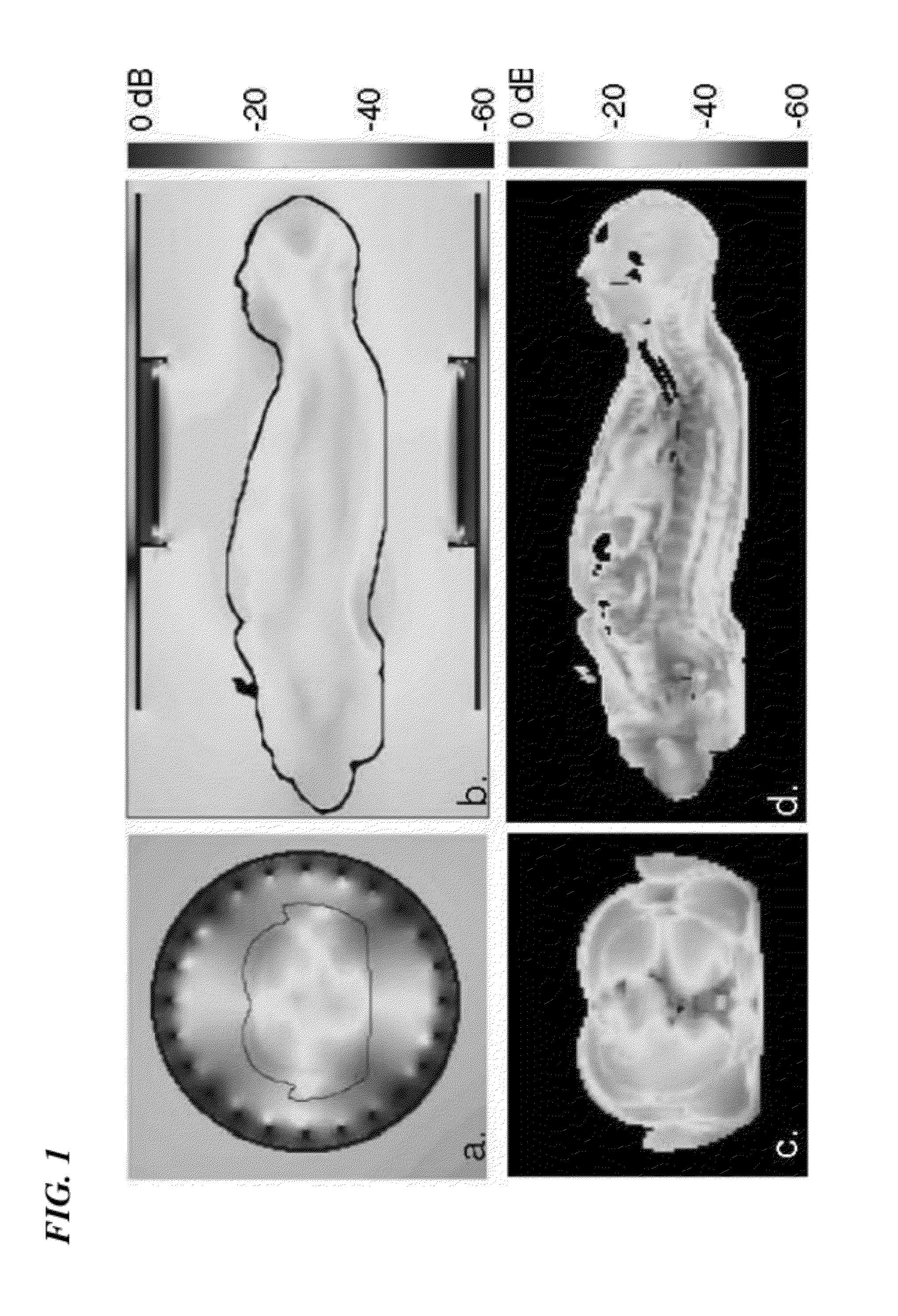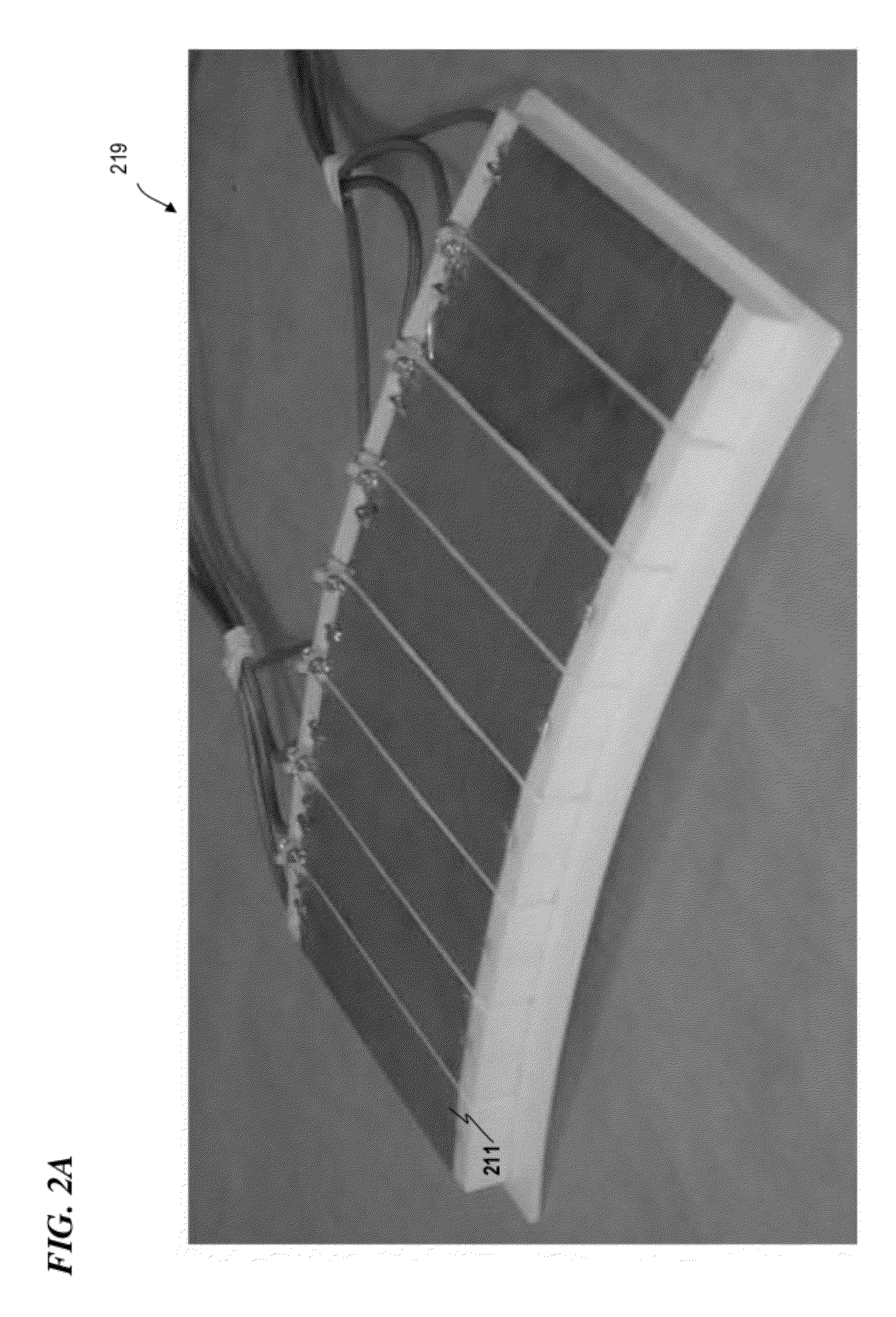Method and coils for human whole-body imaging at 7 t
a whole-body imaging and coil technology, applied in the field of magnetic resonance imaging and magnetic resonance spectroscopy, can solve the problems of no means available for practical 7-t cardiac mri and mrs, and achieve the effects of reducing the risk of cardiac mri and mrs
- Summary
- Abstract
- Description
- Claims
- Application Information
AI Technical Summary
Benefits of technology
Problems solved by technology
Method used
Image
Examples
embodiment 1
16-Channel Transceiver Coil.
[0051]Sixteen transmit channels are provided for maximizing B1 transmit efficiency while minimizing SAR through B1 shimming. Sixteen receive channels are required for parallel acceleration. Key innovations in this Embodiment include the first use of shield capacitance decoupling in a TEM (transverse electrical-magnetic field) array and interface provisions for Embodiment 2.
embodiment 2
Auto-Tuned and Matched Transceiver Coil.
[0052]In prior-art coils, every channel of a multi-channel transmit or transceiver coil must be manually tuned and matched before every study, rendering these coils impractical for research use and unusable for clinical diagnostics. This problem is solved by this unique, automated tune-and-match system of this added to Embodiment 1.
embodiment 3
[0053]Auto-Tuned, 16-Channel Transmit Coil with Integrated 32-Channel Receiver.
[0054]In clinical coils for lower fields, the transmit and receive functions are separated in body imaging. Transmit coils are used to excite a uniform field. Receive coils are used to maximize sensitivity. High-count receiver elements maximize parallel imaging performance. This innovative design will accomplish all three, and include multi-channel transmit B1 shimming with automated tune and match.
PUM
 Login to View More
Login to View More Abstract
Description
Claims
Application Information
 Login to View More
Login to View More - R&D
- Intellectual Property
- Life Sciences
- Materials
- Tech Scout
- Unparalleled Data Quality
- Higher Quality Content
- 60% Fewer Hallucinations
Browse by: Latest US Patents, China's latest patents, Technical Efficacy Thesaurus, Application Domain, Technology Topic, Popular Technical Reports.
© 2025 PatSnap. All rights reserved.Legal|Privacy policy|Modern Slavery Act Transparency Statement|Sitemap|About US| Contact US: help@patsnap.com



